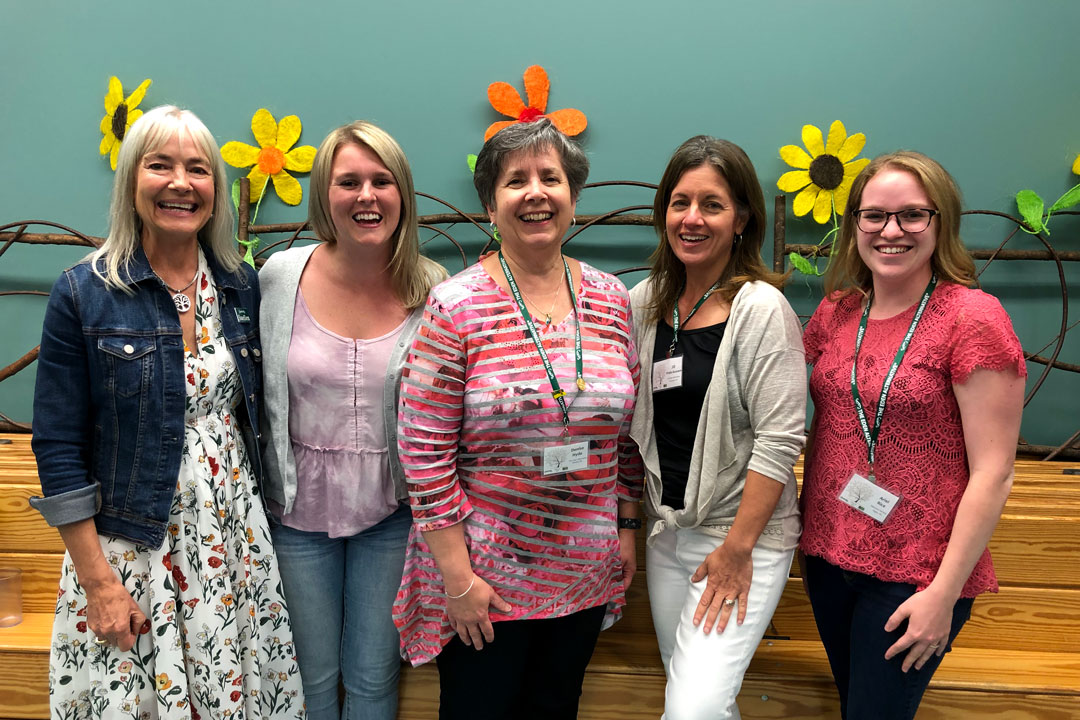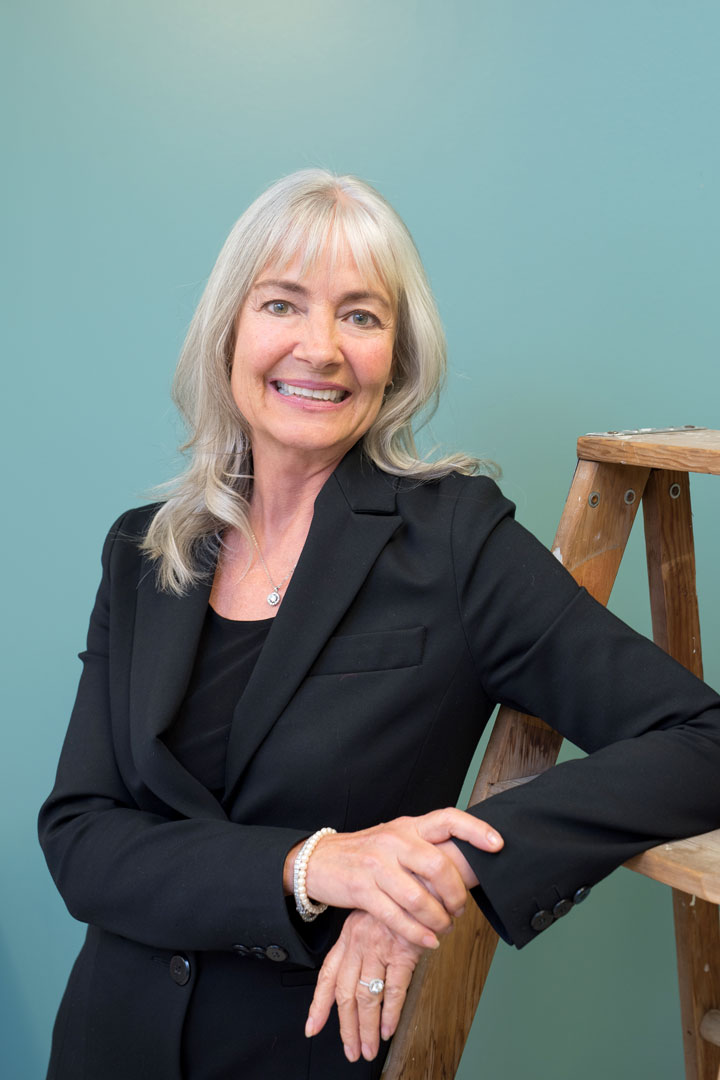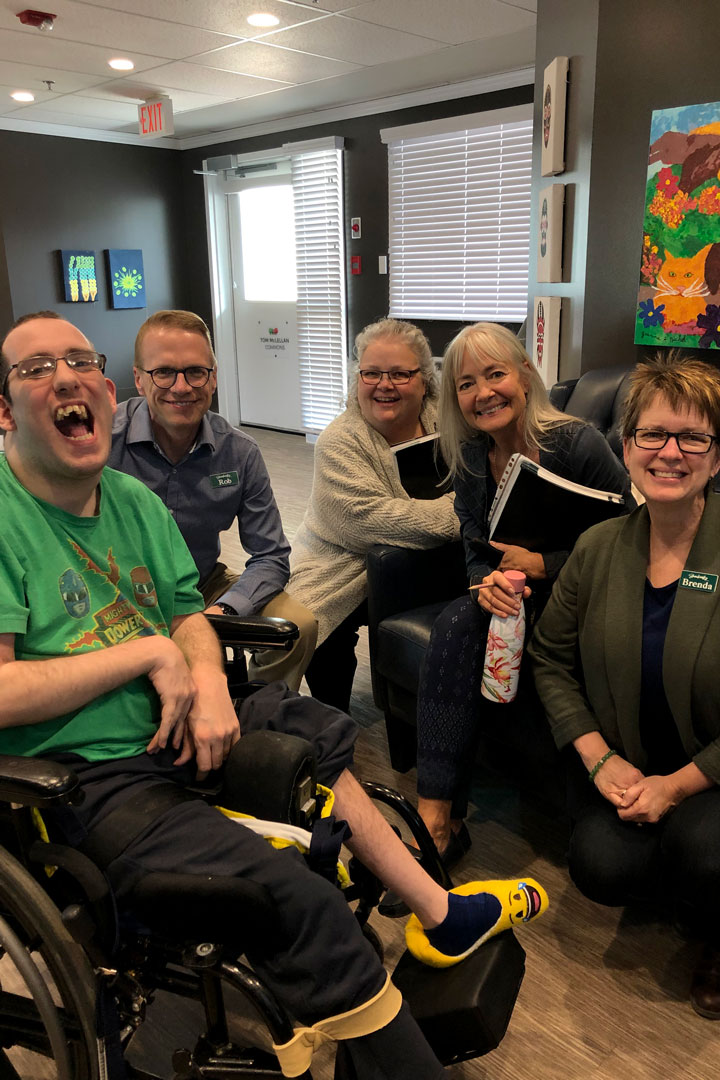
Navigating the new
When Suellen Beatty (BSN’78,MSC’87) and her senior team shut the doors to Saskatoon’s Sherbrooke Community Care Centre and Central Haven Special Care Home on March 15, 2020, she had no clue when they would be able to re-open them again.
By Leslie-Ann SchlosserAt the time, people around the country were holding their collective breath as the COVID-19 virus slowly began to change everything. Not much was known about the virus in North America or what could be done to stop it, yet media was inundated with COVID-19 statistics that seemed to keep doubling overnight.
What really caught Beatty’s attention was the rapid rise of COVID-19 cases creeping into long-term care homes in New York and Eastern Canada. At that point, she knew there was no other option. The world was uncertain, but Beatty and her team acted fast to protect the residents living in their care homes.

“Those were scary times. It felt very dark to me,” said Beatty. “We did this pre-emptively before we were given direction.”
There is no playbook on how to run a long-term care home during a pandemic. Luckily, Beatty has years of experience and a supportive team to rely on through this difficult time.
She has been the CEO of Sherbrooke since 1995, but has worked at the long-term care home since 1987 through several capacities. Throughout her tenure, she and her colleagues have transformed the traditional sense of long-term care by flipping the old institutional model on its head, focusing more on the well-being of residents and adopting a more holistic approach to care.
Before COVID-19, Sherbrooke and Central Haven were vibrant, dynamic and energized communities. The care homes operate based on the Eden Alternative® philosophy which focuses on autonomy, identity, growth, safety, meaning, connectedness, and joy. It’s a complex ecosystem that promotes belonging and well-being above all else.
They use the term ‘neighbourhoods’ when referring to different areas and floors in the buildings. Prior to the COVID-19 pandemic, on any given day you could walk into Sherbrooke and see the smiling faces of the residents as they enthusiastically participated in wine-making clubs, tended to plants in the community garden or created art pieces in the well-lit studio.
“Today, I come into Sherbrooke and I don’t see any of the residents. They’re all tucked away in their neighbourhoods and their houses. They aren’t in any of the common spaces,” Beatty said. “It feels a little like a ghost town. It’s a very strange thing.”
Adapting to the unknown
After they shut their doors, the Sherbrooke team knew that safety was the No. 1 focus. They found themselves creating an entirely new operational strategy overnight.
“That was a scary time for us, not much was known about COVID-19,” said Beatty. “In so many ways Saskatchewan has been in a better spot then the eastern provinces because we could watch and learn from them. We could learn from their difficulties and recommendations.”
Long-term care homes have been hit hard by the COVID-19 pandemic. According to Beatty, the population isn’t necessarily more susceptible to getting COVID-19, but they are more at risk of dying given their age and demographic if they do contract it.
“All it takes is one person coming in to pass it on,” said Beatty.
No stone was left unturned in creating a safe environment. Beatty credits her management team for taking the public health orders and operationalizing them quickly and efficiently. Things change weekly, if not daily, and keeping up with the marching orders is a fulltime job that requires around the clock care and attention.
“The amount of energy this takes and the capacity it takes to turn this ship around; it’s massive,” said Beatty.
Sherbrooke and Central Haven are home to 323 residents. They also rely on a total of over 600 staff members to keep their care homes running. Due to these large numbers, steps were taken to ensure there was no crossover between neighbourhoods. Social distancing was strictly enforced throughout all areas.

Suddenly there was no more mingling in common areas. Residents were restricted to their neighborhoods and houses. Staff had to be screened upon entering the building. “Hands on” staff members were assigned to one area of the building, instead of working in different neighbourhoods. People were reallocated into different roles. Masks were required at all times for staff when in contact with residents.
“All of the things we were doing before, we had to shut them down. We focused our energy on safety and protecting our people from COVID-19. A real big paradigm shift. It’s been very difficult for the residents, for their families and for staff,” said Beatty.
Despite the constant changes, what has endured in their day-to-day operations is the core fundamentals of Sherbrooke’s mission, vision and values. Beatty and her team try to keep these principles and the well-being of residents in mind as they navigate through the COVID-19 realities.
Residents now rely heavily on Sherbrooke staff to be their connection to the outside world, and these relationships have since flourished. Staff members have used iPads and cellphones to keep residents connected to their families.
“There is always a silver lining. We tried to take it and make it the very best we can be,” said Beatty.
When the province lifted restrictions on family visits in June, Beatty and her team once again found themselves pivoting. Because of the sheer size of their care homes, proper protocols had to be implemented to keep residents safe while visiting families; a win for residents, but an administrative battle for Beatty and her team.
To incorporate visits, respective floors were given their own elevators to transport people back and forth. Staff divided up the building, created pathways and fences, and built protective barriers. Today, residents can now visit their families outside from a safe six-foot distance.
“Continuous improvement means looking at new and better ways to do things,” said Beatty. “At a time like this, if you can’t adapt you’re in serious trouble.”
Staff have made sacrifices to keep residents healthy and the families of residents have been understanding and mostly co-operative with the new approach. Still, Beatty has never gotten comfortable in theses uncertain times, saying there is no way to shake the impending doom she often feels.
“Every morning I wake up and I think ‘Please don’t let this be the day that COVID comes to Sherbrooke or Central Haven.’ ”
One day at a time
Looking into the future, Beatty maintains a cautious optimism. As many Saskatchewan residents are celebrating the reopening of the province, Beatty knows they still have to remain diligent because the risk to those in her care homes is still very real.
To date, there have been no cases of COVID-19 in either Sherbrooke or Central Haven. Beatty plans on doing everything she can to keep it that way.
She said she has learned many things circumnavigating these unchartered waters, but insists on taking it one day at a time.
“Only fight the one battle. There are quite a few battles you could fight – families with visits, the right way to deal with all the restrictions; you can be fighting the world, really,” she said.
“Focus on what you can do and not on what you can’t do. Figure out a different way to meet people’s needs.”


